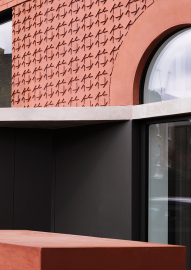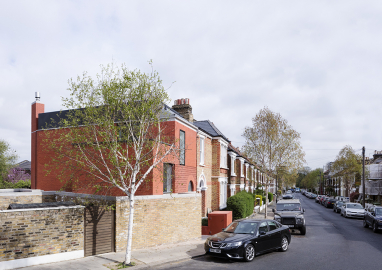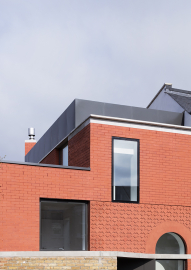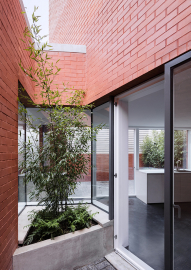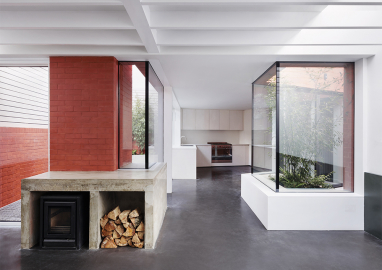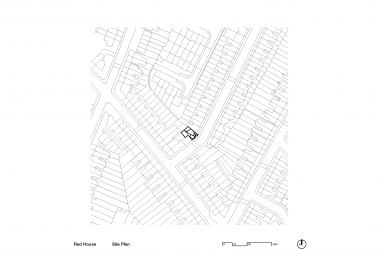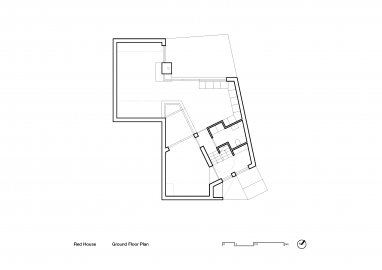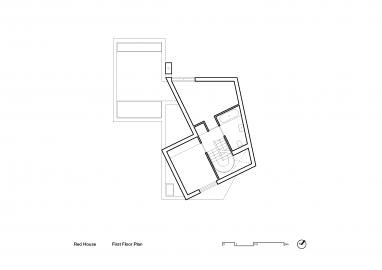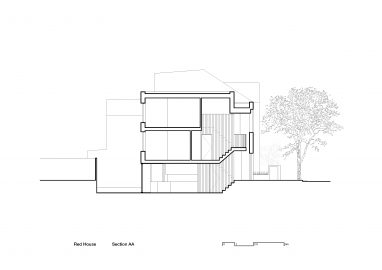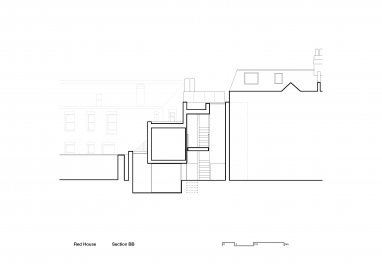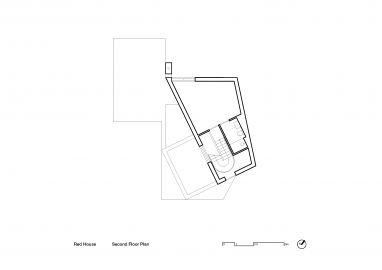Red House
Red House terminates an existing Victorian terrace in South London, creating a three-bedroom, three-storey split-level dwelling on a tight site. In many ways humble and deferential to the existing neighbouring houses, referencing existing forms and patterns, it is also bold and highly individual.
Red House terminates an existing Victorian terrace in East Dulwich, creating a three-bedroom, three-storey split-level 137sqm dwelling on a tight site with many pressures of overlooking. In many ways humble and deferential to the existing neighbouring houses, referencing existing forms and patterns, it is also bold and highly individual. The warm red brick, used locally as a highlight material, creates a striking facade, paired with a high-relief load-bearing concrete panel pigmented to match. Internally, spaces and views are carefully curated to ensure that light and greenery permeate the plan at all levels. A subtle interior palette punctuated by glimpses of external red brick and a darker ground floor datum - both reminders of the distinctive frontage and trace of the excavation to create the house - forms a blank canvas for the buyer to make their own.
The site is tight and strangely-shape, with many pressures of overlooking. It could not accommodate a ‘normal’ Victorian house but, with this as our starting point, we began to distort and manipulate the plan. The ground floor has been lowered by 1m to give the living spaces privacy, as well as to achieve a three-storey house in the height of the adjacent two-storeys; the living room has been pushed to the edge of the site to enclose the external amenity space and ensure its privacy; an inner courtyard brings south western sun into the centre of the ground floor. This ‘pushing and pulling’ of the ground floor has created a fluid and light series of rooms, punctuated by the two courtyards, which bring greenery and flashes of the bright red brickwork into the depth of the plan.
The floors above – more simple and conventional, in line with the developer client’s needs for an economic and marketable building – are linked by an oak staircase rising through a double-height atrium. With seemingly floating landings, the white-painted staircase forms light and airy circulation through the house, with views out at each level, including through the striking arched window on the front facade.
It was an early design decision to continue the pattern of the arched entranceways of the adjacent houses. A desire for the arch to be structural lead to it being concrete: a material that can be pressed and moulded to expose its qualities and reveal solidity and structural strength. This meant we could translate the tiled and decorative entranceways of the existing Victorian terrace onto the facade of the house – lending it a similar visual weight to its neighbours.
Pigmenting the mortar and pattered pre-cast concrete panel to match the crisp wire-cut brick (itself chosen to match the highlight brickwork in the existing terrace) creates a bold cohesive surface which accentuates the building’s form and presence.
Despite being visually arresting and highly contemporary, the building has been carefully considered and designed to be economical to build and maintain. The construction is of masonry cavity walls, with timber joist floors, and some steel frame elements where necessary. Simple hardwood-framed glazing paired with standard aluminium doors and windows, allowed us to use local suppliers and avoid expensive bespoke systems.

